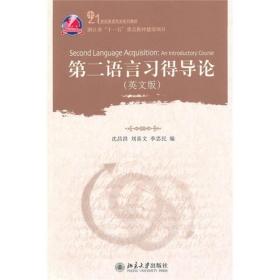
第二语言习得导论(英文版)
21世纪英语专业系列教材:
¥ 158 全新
仅1件
山东聊城
认证卖家担保交易快速发货售后保障
作者沈昌洪、刘喜文、季忠民 著
出版社北京大学出版社
出版时间2010-06
版次1
装帧平装
上书时间2020-11-04
- 在售商品 暂无
- 平均发货时间 暂无
- 好评率 暂无
- 最新上架
商品详情
- 品相描述:全新
图书标准信息
- 作者 沈昌洪、刘喜文、季忠民 著
- 出版社 北京大学出版社
- 出版时间 2010-06
- 版次 1
- ISBN 9787301171356
- 定价 29.00元
- 装帧 平装
- 开本 16开
- 纸张 胶版纸
- 页数 229页
- 字数 246千字
- 正文语种 英语
- 丛书 21世纪英语专业系列教材
- 【内容简介】
-
《第二语言习得导论(英文版)》以章节的形式论述国外“第二语言习得”领域近半个世纪以来的研究历程。全书既全面、详细地介绍语言习得的理论创建与发展、儿童母语习得过程、二语/外语学习理论以及二语课堂教学研究等方面的成果,又综合、客观地反映认知学、心理学、社会文化学等领域对第二语言习得与发展的不同视角与观点。
本教材适合高等院校英语专业本科生、研究生以及中小学英语教师学习和使用。 - 【目录】
-
Chapter1Introduction:KeyConceptsandIssuesinSLA
1.1LanguageAcquisitionandSLA
1.2SomeDefinitionsofSLA
1.3SomeStructuralCharacteristicsofSLA
1.4TheLiteratureontheTheoriesofSLA
1.5ATheoreticalApproachProposedbySpolsky
1.6TheoreticalApplicationstoL2TeachingandLearning
1.7SomeDistinctionsinthefieldofSLAResearch
1.7.1SLAandFLA
1.7.2AcquisitionversusLearning
i.7.3InputversusIntake
1.7.4ImplicitversusExplicitLearning
1.7.5IncidentalversusIntentionalLearning
1.7.6InstructedversusNon-instructedSLA
1.8Conclusion
PointsforThinking
FurtherReading
Chapter2ViewsonLanguage,LearningandLearner
2.1ViewsontheNatureofLanguage
2.1.1PhoneticsandPhonology
2.1.2Syntax
2.1.3Morphology
2.1.4Semantics
2.1.5Pragmatics
2.2ViewsoftheLanguageLearningProcess——L1versusL2
2.2.1ChildrensAcquisitionofLexicon
2.2.2ChildrensAcquisitionofSyntax
2.2.3ChildrensAcquisitionofPhonology
2.2.4ChildrensAcquisitionofSemanticsandPragmatics
2.3ViewsoftheSecondLanguageLearner
2.3.1TheLearnerasLanguageProcessor
2.3.2DifferencesbetweenIndividualLearners
2.3.3CognitiveFactors
2.3.4AffectiveFactors
2.3.5TheLearnerasSocialBeing
2.3.6LinkswithSocialPractice
2.4Conclusion
PointsforThinking
FurtherReading
Chapter3AnIntroductiontoLanguageAcquisition
3.1Introduction
3.2DevelopmentalPatternsinLIAcquisition
3.2.1AGeneralOutlineofEnglishAcquisitionasL1
3.2.2PositiveandNegativeReinforcementsinChildrensL1Acquisition
3.2.3BeneficialViewsfromChildrensL1Acquisition
3.3TheControversybetweenBehavioristandMentalistModels
3.4DevelopmentalPatternsinL2Acquisition
3.4.1EarlyStages
3.4.2FormulaicSpeech
3.4.3StructuralandSemanticSimplification
3.4.4TheHypothesisofL1&L2Acquisition
3.5Conclusion
PointsforThinking
FurtherReading
Chapter4RecentHistoryofSLAResearch
4.1Introduction
4.2TheEarlyStudiesonLanguageAcquisition(to1960s)
4.2.1BehavioristicViewofLearning——HabitFormation
4.2.2ContrastiveAnalysis
4.2.3BehaviorismandCAforLanguageTeaching
4.2.4BehaviorismunderAttack
4.3TheFollowing-upStudiesin1970sand1980s
4.3.1TheBirthofErrorAnalysisandInterlanguage
4.3.2KrashenandHisMonitorModel
4.3.3SchumannsPidginizationorAcculturationModel
4.4TheRecentStudiesonL2A(beyond1990s)
4.4.1TheDevelopmentalPatternsinLanguageAcquisition
4.4.2DifferentRolesFoundinLanguageAcquisition
4.5Conclusion
PointsforThinking
FurtherReading
Chapter5TheUGApproachtoLanguageAcquisition
5.1Introduction
5.2UniversalGrammar(UG)forLanguageAcquisition
5.2.1ChomskyandHisUGTheory
5.2.2WhatConstitutesKnowledgeofLanguage?
5.2.3HowdoesUGRelatetoLanguageAcquisition?
5.2.4HowisKnowledgeofLanguagePuttoUse?
5.3ArgumentsfromFirstLanguageAcquisition
5.3.1CharacteristicsofFirstLanguageAcquisition
5.3.2LanguageAcquisitionandIntelligence
5.3.3LanguageImpairmentandHumanBrainDamage
5.3.4Conclusion
5.4WhatDoesUGConsistof?.
5.4.1PrinciplesandParametersTheoryinUG
5.4.2UGPrinciples
5.4.3UGParameters
5.5EvaluationofUG-basedApproachestoSLA
5.5.1TheScopeandAchievementsoftheUGApproach
5.5.2TheUGViewofLanguage
5.5.3TheUGViewofLanguageAcquisition
5.5.4TheUGViewoftheLanguageLearner
5.6Conclusion
PointsforThinking
FurtherReading
Chapter6CognitiveApproachestoSLA
6.1Introduction
6.2TwoMainGroupsofCognitiveTheorists
6.3ProcessingApproaches
6.3.1Information-processingModelsofL2Learning
6.3.2McLaughlinsInformation-processingModel
6.3.3AndersonsActiveControlofThought(ACT)Model
6.3.4ApplicationofACTtoLearningStrategies
6.4Connectionism
6.5TheoriesofL2Processing
6.6EvaluationofCognitiveApproachestoL2Learning
6.7Conclusion
PointsforThinking
FurtherReading
Chapter7SomeOtherPerspectivesonSLA
7.1Introduction
7.2FunctionalPerspectivesonL1LearningandSLA
7.3FunctionalistContributionstoanUnderstandingofSLA
7.4SocioculturalPerspectivesonSLA
7.5SociolinguisticPerspectivesonSLA
7.6Conclusion
PointsforThinking
FurtherReading
Chapter8Input,InteractionandOutputinSLA
8.1Introduction
8.2InputandInteractioninL1Acquisition
8.3InputandInteractioninSLA
8.4OutputinSLA
8.5TheorizingInput,InteractionandOutputResearch
8.6Feedback,RecastsandNegativeEvidenceinSLA
8.7Evaluation:TheScopeofInteractionistResearch
8.8Conclusion
PointsforThinking
FurtherReading
Chapter9VariedPerspectivesonlnterlanguage
9.1AnIntroductiontoInterlanguage
9.2SocialAspectsofIL
9.3DiscourseAspectsofIL
9.4PsycholinguisticAspectsofIL
9.5Conclusion
PointsforThinking
FurtherReading
Chapter10ResearchesonL2ClassroomPractice(I)
10.1Introduction
10.2AnIntroductiontotheHistoryofL2TeachingMethods
10.3Cross-languageCompetitionbetweenL1andL2
10.4SomeMethodsUsedinL2ClassroomResearch
10.5DataCollectionandDataAnalysis
10.6Conclusion
PointsforThinking
FurtherReading
Chapter11ResearchesonL2ClassroomPractice(II)
11.1DirectInvolvementofClassroomInteractionResearch
11.2AnIntroductiontoClassroomInteraction
11.3TypesofLanguageUseinClassroomInteraction
11.4TurnTakinginClassroomDiscourse
11.5DifferencesbetweenClassroomandNaturalisticDiscourse
11.6TheTeachersRoleinClassroomInteraction
11.7LearnerParticipation
11.8ClassroomInteractionintheL2Learning
11.9TheRelationshipbetweenClassroomInteractionandSLA
11.10Conclusion
PointsforThinking
FurtherReading
Chapter12Conclusion
12.1ABriefReviewoftheBook
12.2AnIntegratedViewofSLAResearch
12.3MainAchievementsofRecentSLAResearch
12.4SLAResearchandLanguageEducation
12.5FutureDirectionsforSLAResearch
PointsforThinking
FurtherReading
REFERENCES
点击展开
点击收起
相关推荐
— 没有更多了 —






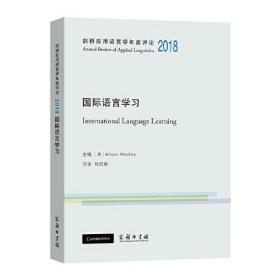

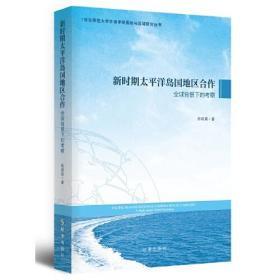
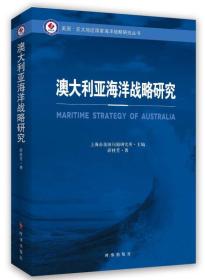
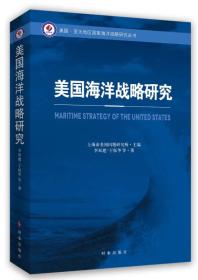










以下为对购买帮助不大的评价